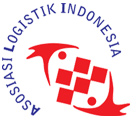Lean Supply Chain: The Culture That Must Be Fully Embraced
David Sherman
Many firms today are realizing their inter-connectivity to each other and their habitual dependence on one another for success. In order to be successful these firms must be keen to improve their standing. By maintaining lean practices and instilling lean cultures into their employees and work environment firms are able to realize this success. These lean practices and cultures lead to firms transforming their habits based on customer demand rather than by supplier constraints. Lean supply chain thinking not only aims to decrease waste but it also looks to decrease lead time and operational expense(s) while improving velocity to the rate of consumption. The lean supply chain is not a project or a function; rather it is a culture that must be fully embraced levels of each of the collaborating firms such as supplier and customer, and second tier customer(s)/supplier(s). Lean firms seek to match the demand of the customer (pull system) by ordering in smaller and smaller batch sizes, and by reducing lead times (and increasing velocity) within their supply chain network.
What is the lean supply chain?
The lean supply chain is a systems approach to understanding where costs are hidden (bottlenecks), and how these bottlenecks can be eliminated throughout the supply chain network. Bottlenecks refer to the constraints on the supply chain which does not allow a firm to meet customer demand efficiently (time, cost, material utility etc.). These bottlenecks and inefficiencies are sometimes hidden by high levels of inventory which can lead to even more significant waste. The key to implementing a lean supply chain first comes from the understanding of its basic principles and guiding theories. There are three key principles to understand and utilize throughout the lean supply chain processes. The three keys are: one-piece flow(reducing batch sizes in the ordering and manufacturing processes to match customer demand rather than machine/supplier constraints); process standardization and continuous improvement (maintaining processes that only add value for the customer and understanding that a process can be continuously improved upon to eliminate inefficiencies. This also adds into the learning culture and problem solving culture which is key to lean strategy as well); and also waste elimination (understanding where waste is in the supply chain and removing it to obtain higher utilization of materials and costs).
How does the lean supply chain function?
In practice, the lean supply chain aims to reduce overall fulfillment costs within the supply chain, for each party involved including: suppliers, manufacturers, and customer(s). There are several functions of the lean supply chain that do decrease the overall fulfillment costs and eliminate waste for each party involved as well (which also reduces costs). Lean supply chain must absolutely be approached from a systems perspective, which will allow for supply chain professionals to understand the impact on specific cost areas throughout a firm and for the entire supply chain as a whole. One-piece flow and batch size reduction are instilled in practice to match customer demand with actual output of a manufacturing/service firm. Firstly, inventory reduction leads to lower risk of obsolescence in a product, and also as more shipments are made (smaller ordering sizes) there is more material flowing through the supply chain at a higher velocity but also to a steady beat, or takt. The process called a pull system is then created as the customer's order drives the supply chain rather than more constrictive supplier constraints higher up the supply chain. Ordering smaller batches in a higher frequency (to match customer demand) eliminates a vast majority of storage costs, levels the volume flow within a firm and this ripple effects the entire supply chain as orders are received in a more level volume manner creating stability. So, what stage of lean is your firm currently in?
http://www.leancor.com/blog/lean-supply-chain-the-culture-that-must-be-fully-embraced/









